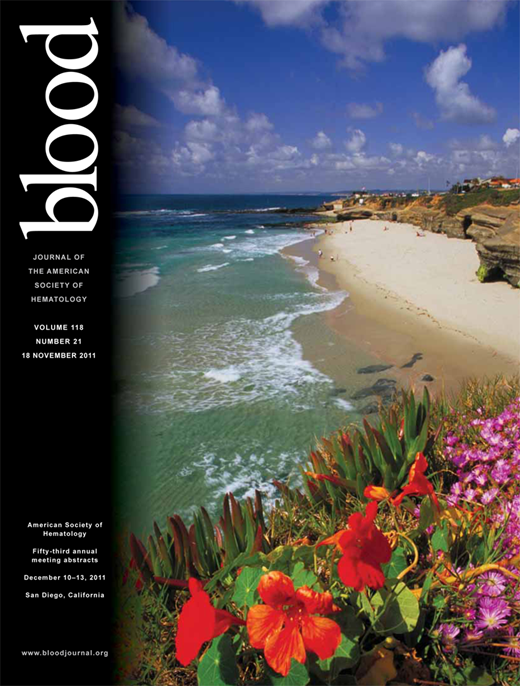Abstract
Abstract 708
Thrombocytopenia 2 (THC2, MIM 188000) is an autosomal dominant form of thrombocytopenia described for the first time in a large Italian family, which allowed us to map a locus on 10p11.1-p12. Since the recent identification of ANKRD26 (Pippucci et al, Am J Hum Genet 88:115, 2011), as the gene responsible for the disease, the screening led to recognition of 25 families (91 patients). Although most families were of Italian origin, patients were also from North America, Argentina, Senegal, Japan and Spain, indicating that the disease is distributed worldwide. Confirming recently published data (Noris et al, Blood 117:6673, 2011), this cohort showed that thrombocytopenia was moderate and bleeding tendency was usually mild. Most patients were characterized by deficiency of both glycoprotein Ia and a-granules but normal platelet aggregation in vitro. Bone marrow examination and serum thrombopoietin levels were indicative of dysmegakaryopoiesis. Moreover, there was evidence of leukemia risk in patients with ANKRD26 mutations.
The 12 mutations identified so far are all localized in a short stretch of 22 nucleotides of the 5' untranslated region (5'UTR). The effect of three mutations was evaluated in a reporter gene assay with the luciferase gene under the control of the wild type and mutated 5'UTR. When constructs were transfected in K562 and undifferentiated DAMI cell lines, no significant difference in luciferase activity was observed. However, when the constructs were transfected in megakaryocytes obtained from differentiation of the DAMI cells, a significant increase in activity was reported, suggesting that the 5'UTR plays a regulatory role of the ANKRD26 expression during megakaryopoiesis (Pippucci et al, Am J Hum Genet 88:115, 2011).
To further investigate the mechanisms responsible for the ANKRD26 expression, we tested the activity of a putative regulatory region (730 bp), containing 574 bp upstream of the transcription initiation site and the 5'UTR. The effect of two mutations (c.-128G>A and c.-116C>T) was evaluated in both orientations using a luciferase assay in HeLa cells. There was no significant difference between wild type and mutated inserts cloned in either sense or antisense orientation, though there was a slight transcriptional increase of the sense mutated constructs and a reduction of the antisense mutated sequences in comparison with the wild type inserts. In order to test the promoter region in a more suitable model, the same constructs were transfected in DAMI differentiated megakaryocytes. Whereas the antisense wild type and mutated constructs did not show any transcriptional activity, the sense mutated constructs generated a statistically significant increase of activity, suggesting that the mechanisms controlling the expression of ANKRD26 are different in the two cell lines. The role of 5'UTR was further investigated by testing a fragment (574 bp) in which 5'UTR was deleted. In megakaryocytes, this sequence generated a statistically significant increase of the luciferase activity compared to the 730 bp insert. On the contrary, the same constructs transfected in Hela cells resulted in a reduction of the luciferase activity.
From these preliminary data we hypothesize that the 5'UTR region plays an important role inhibiting the ANKRD26 expression during megakaryopoiesis through the binding of factors, whose recognition sites are destroyed by mutations identified in patients. Consistent with this hypothesis, ANKRD26 is expressed in human CD34+ and BFU-E but hardly detectable in CD41+ cells.
No relevant conflicts of interest to declare.
Author notes
Asterisk with author names denotes non-ASH members.

